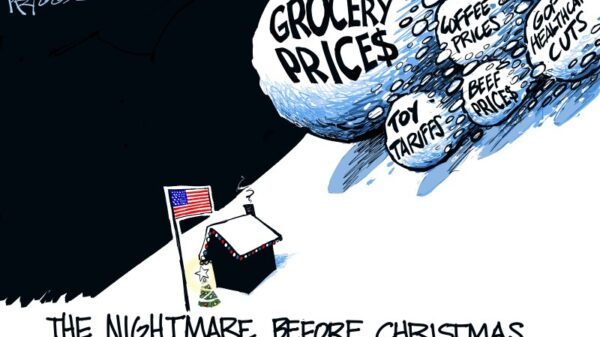UPDATE: The U.S. has just announced a comprehensive ceasefire proposal aimed at ending the ongoing conflict between Israel and Hamas in Gaza. This ambitious plan, backed by significant international support, outlines critical steps for an immediate cessation of hostilities, but key uncertainties loom regarding Hamas’s acceptance and the future governance of Gaza.
According to the plan, within 72 hours of agreement by all parties, Hamas is required to release 48 hostages—both living and deceased—back to Israel. In exchange, Israel will free 250 Palestinian prisoners currently serving life sentences, as well as 1,700 Gazans detained since the war erupted. Humanitarian aid will be increased in famine-stricken Gaza, facilitated by the United Nations and the Red Crescent.
The proposal raises the stakes by mandating Hamas to “decommission” its weapons and dismantle its military infrastructure and tunnels. Notably, Hamas would lose its governing role in Gaza, with a transitional body led by former British Prime Minister Tony Blair to oversee reconstruction efforts. This transitional government would consist of “qualified Palestinians and international experts.”
This proposal marks the most serious attempt to halt the Gaza conflict to date, buoyed by broad Arab support, including backing from Qatar and Egypt. Israel’s Prime Minister Benjamin Netanyahu is framing the proposal as a significant security win for Israel, insisting that hostages will be prioritized and that Israeli troops will remain in Gaza indefinitely, without a defined timeline for withdrawal.
However, Israeli officials, including Netanyahu, are grappling with contentious language regarding Palestinian self-determination. While the plan includes vague commitments towards a Palestinian state, Netanyahu has firmly denied any agreements that would lead to such an outcome, stating, “Not at all, and it’s also not written in the deal.”
Hamas faces a critical dilemma: accepting a deal that demands extensive concessions or risking severe repercussions, including loss of support from its Arab allies. Initial reactions from Hamas officials have been negative, raising questions about their willingness to comply with the ceasefire conditions. However, internal pressure may incentivize them to find a way to accept parts of the deal without appearing to capitulate.
The proposal’s potential fallout is immense. Should Hamas reject it, the U.S. and Israel have indicated a willingness to continue military operations in Gaza. Netanyahu has warned that if Hamas leaders accept the deal only to undermine it, Israel will pursue further action. The political dynamics in Israel complicate matters further, as Netanyahu’s far-right coalition partners have already expressed skepticism regarding the plan.
In addition, the proposal faces skepticism from Israeli Finance Minister Bezalel Smotrich, who criticized various elements of the ceasefire framework, suggesting that Hamas may reject the deal to provoke a renewed conflict with greater international backing for Israel.
As this situation develops, the consequences for both the region and the global community are significant. With a potential hostage exchange and ceasefire on the horizon, the international community is watching closely to see if this latest proposal can pave the way for lasting peace in Gaza.
The coming days will be critical as all parties assess their positions. The world is left to wonder: will Hamas accept the terms, or will the conflict escalate once more?





































































